© 2025 ALLCITY Network Inc.
All rights reserved.

Royce Freeman’s stats are eye-popping. His fame at Oregon is well known, and when you have such success as a college star, you’re bound to have plenty of flashy highlights that’ll get the average fan excited.
Factor in all those things and it’s logical to think Freeman was a steal for the Denver Broncos and promises to be a fantastic running back in the NFL. However, there’s a reason the Ducks star was still available in the third round and seen by some as a lesser prospect than other running backs who were still available.
Read our scouting report, and you’ll see why there’s some healthy skepticism regarding his ability to reproduce the success he had in the Pac-12 at the next level.
That said, the role of an analyst is to try and understand the logic of a franchise in taking a player, not simply going off one’s own opinions and reflections. As I searched deeper to understand what Denver saw in Royce, it was clear that Freeman’s best season and his best tape, was back in 2015.
What changed after that?
Two main things—the offense he was playing in, and the weight he was playing at.
That weight is key to this piece and to Freeman’s ability to succeed as a pro. While our aforementioned scouting report is entirely based off of last seasons film, where the RB was playing at close to 240 pounds, in 2015, Freeman was playing closer to 230. That’s the same weight he was at in Indianapolis at the Combine, where he ran an impressive 4.54 40-yard dash at his size, while also impressing in other athletic drills.
That combine performance, with the terrific flashes he showed in 2015, are what should get you excited about the Broncos selection. It’s weird to say, but going back in time is where you can truly understand his upside as an NFL player.
To understand these two versions of Royce and what the Broncos need to do to get him to be his best self, we went back to his tape from that 2015 season—every video clip you see in this article is from that season—here’s what we found.
Why Freeman was bigger a year ago
In some ways, the weight conundrum Freeman is facing is similar to what Denver was dealing with DeMarcus Walker a year ago. Obviously, Freeman won’t be caught in the middle of two positions, but the Broncos will have to decide what type of back they want him to be to establish his ideal weight.
If Denver wants a big bruising runner who can be a factor in short-yardage situations, then 240 pounds is just fine.
Considering they drafted David Williams to be that type of runner, ideally, Freeman should be closer to 230 or even 225, where he can be a more complete runner with more explosiveness, agility, and the ability to get open in the passing game, as well.
The reason for Freeman’s weight gain was that he was slowed by injuries in 2016, having the worst season of his storied career. Thus, Oregon head coach Willie Taggart had him bulk up to be more durable, which is why he gained almost 10 pounds.
A similar thing happened to Kareem Hunt at Toledo. When watching Hunt’s college tape, it was easy to see when he was bigger and when he was lighter, with his smaller size making him much more dynamic. Freeman is bigger than Hunt and Hunt is a more complete back. However, the situations are similar, and the smaller version of the Kansas City Chiefs’ rookie really made his mark on the NFL a season ago.
If Denver wants Freeman to have a similar type of impact early in his career, they should take a page from the Chiefs and allow their rookie to carry less weight.
At the same time, it’s worth wondering if Freeman playing at a greater weight is essential to him staying durable—a concern that he has regardless, given the abundance of carries he racked up in his college career. Time will tell what the ideal weight is for his health, but the eye test suggests that a slimmer Freeman is best.
What a lighter Freeman brings to the table
The first thing you can see in Freeman is that he was much quicker in 2015 while not losing much power. It’s also easier to see that 4.5 speed in those situations where he just looked faster.
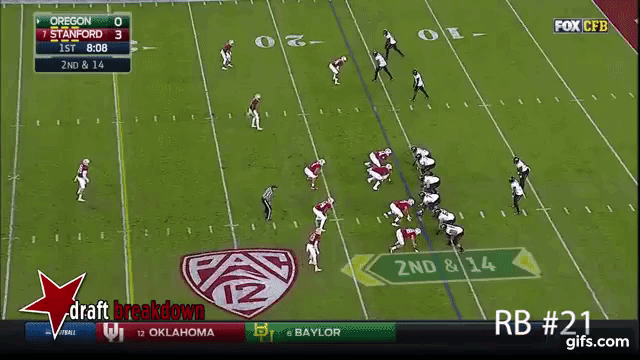
In a different scheme under Mark Helfrich, and not Taggart, Freeman’s vision was also better—though he did have the bad habit of trying to push runs outside too often, a trend he’ll have to get out of as a pro.
Agility and foot quickness are essential in the NFL and Freeman was just at another level in 2015. His ability to stay patient and hit the hole was much better, too, demonstrating a greater burst, which is a must in the pros.
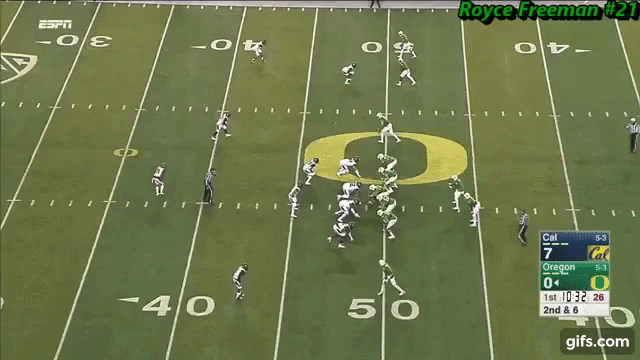
While Freeman may never be a home-run hitter, his ability to be quicker and accelerate into the open field is where he really was able to go to work. Regardless of his weight, the man known as “Rolls Royce” is at his best in the open field, where he can punish smaller defenders, especially if he can both juke them out of their cleats or run them over. When he can do both things, DBs can only try to run him down from behind because he’s a bully in space.
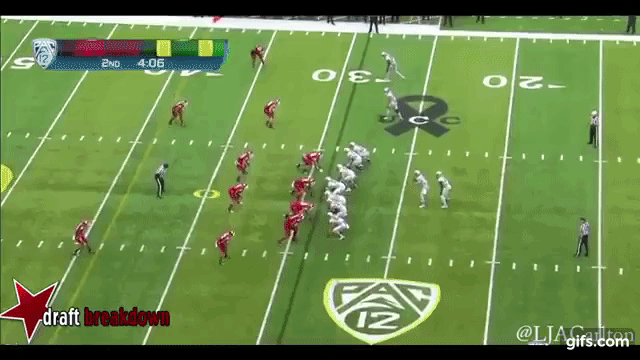
Across the board, Freeman’s stats in 2015 were career bests. Whether it was his yards per carry, rushing yards, touchdowns or receiving yards, he had a career season, all while having a career high in carries and staying durable in the process.
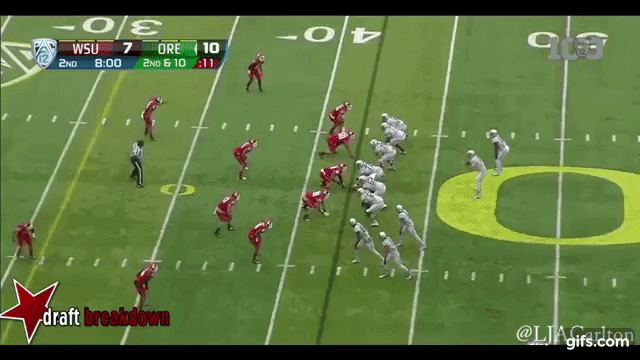
At the same time, he wasn’t perfect, with several areas he still needs to work on. First might be his ability to get open underneath as a receiver, an area in which he showed progress in 2017, but still needs to work on. The talent is there to do it, he just needs to follow through on his routes and not be lackadaisical.
Freeman can also be frustrating to watch at times, as he just doesn’t seem to fully understand who he is as a runner. Instead of being a one-cut-and-go RB, he too often tries to dance around in the backfield or push runs outside. That just won’t fly against more athletic NFL defenders.
Plus, Freeman’s just at his best running inside, where he can break tackles at the second level and then get into the open field where he can really murder defenders in the secondary. That added burst and agility he showed in 2015 where crucial in him getting through the hole and allowing him to make such runs. His ability to make his mark on cutback runs was also greater with the added quickness.
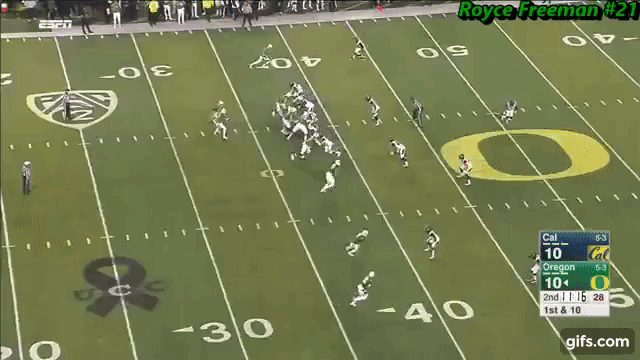
His biggest concern is in his ability against defenses like Washington’s, with tons of NFL talent, where he was too often stopped for a loss of yards. Freeman has the tools, but needs the right running game and needs to improve his vision.
If he can focus on getting more agile and maximizing shiftiness in space while staying at 230 or even 225 pounds, he can get back to that 2015 form and be a top-10 talent at his position in the league.

He can be a bell cow who destroys defenders in the open field; he just needs to embrace a new style.
Adjusting to the pro game
Part of the issue with Freeman’s running style and his propensity to push runs outside came from the scheme that Oregon runs. It’s legitimate to wonder how much of that scheme was asking him to run outside, and if he was miscast at times at Oregon. If so, his ability to overcome that scheme while still being incredibly productive speaks volumes.
Regardless, the former Duck will have to adjust from a spread attack to a typical pro scheme. Particularly, running out of the I-formation instead of being always in shotgun looks will be a big adjustment and should allow Freeman to attack the hole inside with a head of steam, which is where he’s at his best.
Pro running games like LSU, Georgia, FSU, Alabama, Wisconsin, and Stanford have produced a lot more future pros than spread attacks at RB. Freeman will face a major adjustment and so will the Broncos in catering to his skills.
While running out the I-formation will suit him better, tosses to the outside or option plays allowed the bruising back to get out in space with greater ease and do damage. Throwing in such wrinkles could really help Freeman succeed early on.
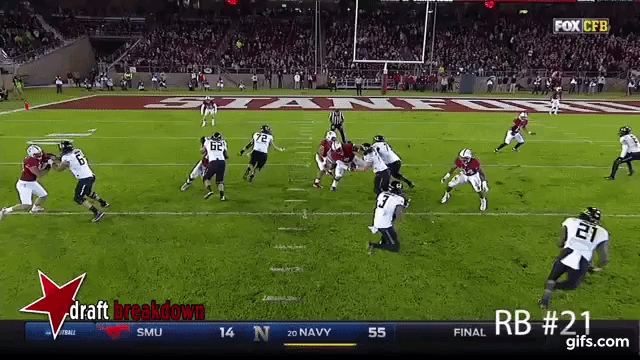
In Conclusion
A big plus for Freeman is his character and leadership, which bode well for his commitment to a new system and his ability to quickly work at learning a new playbook.
That work ethic should also be beneficial to him getting lighter and staying there. He’s already changed his body once and changed it back to have his phenomenal showing in Indianapolis. Now, he needs to stay at that weight and work on his vision while also adapting to a pro-style system.
When Freeman is at his best, like in this run against Washington State, he’s a truly monstrous talent.
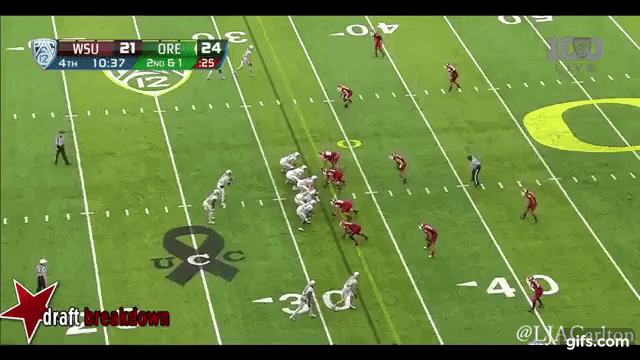
If he can consistently run up the middle and break tackles at 225 pounds, like he did at times in 2015, he could’ve been a first-round pick. That’s where his potential lies, that’s where he could be a 1,000-yard runner at the NFL level.
The Broncos new back compares most to Jordan Howard. Though, Howard has elite vision. If Freeman can develop into that type of a back in a pro-style system, watch out.
Ultimately, this wasn’t a bad pick, but there’s some digging that’s required and some adjustments the new backfield talent will have to make in Denver. It’s odd to go back two seasons to see a player’s true potential, but that’s the case with Freeman, who’ll have to find that 2015 form to be a true NFL star.
The ability is all there; the big question is if he can turn back the clock and become an even more refined version of his former self.
Comments
Share your thoughts
Join the conversation



